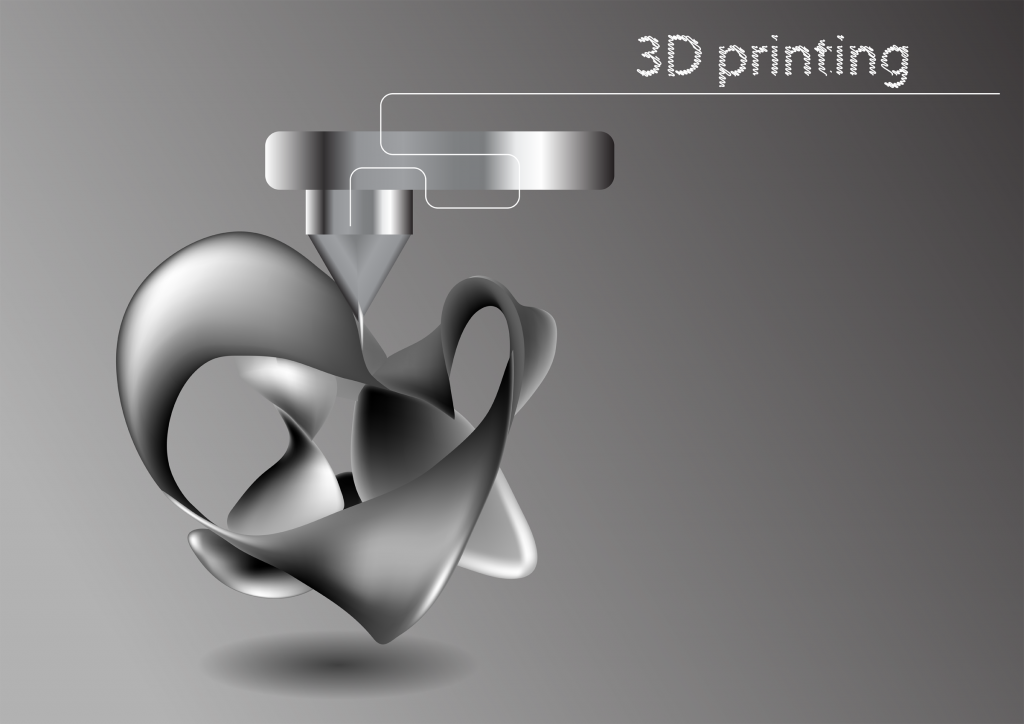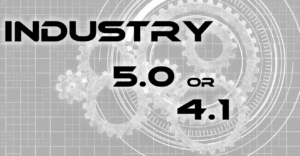For nearly a decade, pundits have been touting the transformative effects of additive manufacturing (aka 3D printing). Four years ago Matthew Timms wrote, “Cited by some as ‘the next industrial revolution’, 3D printing is slowly reshaping the traditional supply chain, and could conceivably be the single most disruptive breakthrough since progressive assembly.”[1] Most analysts include additive manufacturing in their list of technologies that collectively are fostering the next industrial revolution, which is often referred to as Industry 4.0. Timms correctly points out even if additive manufacturing overcomes some of its remaining challenges, it won’t ever completely replace traditional manufacturing. Nevertheless, additive manufacturing is still poised to have a major impact. Peter Sayer (@ParisGeek) explains there are two primary types of additive manufacturing: “Fusing powdered metal or plastic (selective laser sintering) and solidifying a liquid using ultraviolet light (stereolithography or continuous liquid interface production).”[2] Because so many 3D printing materials are now available to use, prototyping is one area where 3D printing will play an increasingly important role, regardless of whether additive or traditional manufacturing methods are eventually used to produce the final product.
The benefits and challenges of additive manufacturing
Benefits. Timms succinctly addresses the reasons most analysts believe additive manufacturing will have significant long-term impact. “The traditional supply chain,” he writes, “though it has been much improved over the years, still carries with it a number of glaring inefficiencies, namely: long lead times, high transport costs, complex distribution networks and a dependency on economies of scale. However, a 3D printing alternative represents quite the opposite, in that goods can be locally printed and distributed, with low transport costs to match, leading some commentators to speculate overly enthusiastically about the changing dynamics of traditional supply chains.” Another reason 3D printing has excited manufacturers is design. There are some designs that only additive manufacturing can produce. Shane Fox, Cofounder and CEO of LINK3D, notes, “We are still in the early days of 3D printing with respect to the impact that it can deliver both technologically and conceptually. Accepting new ways of designing parts is the first step. From there, we need technology that can help us deliver on the promise of complexity.”[3] Underscoring the point we are in the early days of additive manufacturing, a survey by MHI found 3D printing has penetrated only 16% of manufacturing activities and the projected penetration over the next five years is only expected to reach 48%.[4] Michael Gravier (@Michael_Gravier), an Associate Professor at Bryant University, predicts additive manufacturing will be a boon for developing countries. He explains, “3D printing means low infrastructure requirements, more mobility, more programmability and more adaptability. This means nearly all of the 95% of world consumers that live outside of the U.S. will eventually access technology superior to our current production systems.”[5]
Challenges. The biggest challenge associated with 3D printing is speed. It takes time to produce a 3D product. That’s why traditional, highly efficient, long-run manufacturing will always be more cost-effective than 3D printing for many products. In addition to being time-consuming, analysts at Apple Rubber have identified several other additive manufacturing challenges still needing to be addressed.[6] They are:
- Standardization. They cite a Deloitte study which concludes, “Many manufacturers and end users have difficulty stating with certainty that parts or products produced via 3D printing — whether all on the same printer or across geographies — will be of consistent quality, strength, and reliability. Without this guarantee, many manufacturers will remain leery of AM technology, judging the risks of uncertain quality to be too costly a trade-off for any gains they might realize.”
- Environmental impacts. They note, “The most popular material use for 3D printers is plastic filament. While this plastic is high quality and relatively inexpensive, its byproduct ends up in landfills.” Today there is an extraordinary push to get people to use fewer plastic products. They also note, “Desktop 3D printers, which are widely accessible for rapid prototyping and small-scale manufacturing in home and office settings, release potentially harmful nanosized particles in indoor air. In order to avoid adverse health effects, 3D printers for industrial use must come equipped with exhaust ventilation or filtration accessories and be used in an adequately ventilated environment.”
- High costs and time. They explain, “Stratasys Direct found that equipment cost was the number one concern for professional users of 3D printers. While it’s fairly easy and inexpensive to print with plastic, metal printers required by big companies can easily costs tens of thousands of dollars. Even when manufacturers have access to this equipment, the process moves very slowly. Unlike traditional manufacturing, there are high costs associated with producing large volumes of certain products using 3D printing. The time it takes to produce an object with 3D printing, for example, depends on the number of layers that need to be printed and the speed of the printer (which depends on the speed at which it can extrude the raw material used). Today’s metal printers can take days to print, as even new machines that use metal powders only build between 5 and 40 centimeters per hour.”
- Intellectual property rights. They note, “Since additive manufacturing designs can be printed by anyone at any time, it changes the way we see value — shifting the value from the object itself to its design. The consequences of not addressing IP concerns can be particularly harmful. If anyone can print a pirated or unprotected design independent of the intended quality or design measures, this creates security concerns for the public and liability issues for the designer.” To address this issue, “General Electric (GE) filed a patent to use a distributed ledger to trace and validate 3D printed parts in its supply chain.”[7] Blockchain has the potential to dramatically reduce IP risks associated with 3D printing.
Apple Rubber analysts also point out 3D printing is so new finding employees knowledgeable about how best to leverage the technology could be a challenge.
Industries likely to rely heavily on additive manufacturing
Gravier asserts industries where customization or speed are important will be those most affected by 3D printing in the near-term. “Supply chains are about to make a fundamental shift,” he explains. “Where traditionally supply chains followed something like the SCOR model (plan, source, make, deliver, return), 3D printing is innovating that model and putting consumers in the driver’s seat.” Industries in which customization is important will also appreciate the fact that 3D printing can help reduce inventories. Adam Kidd and Jamie Sciacchitano, consultants with GRA, explain, “One of the more apparent ways that 3-D printing technology could be used to transform supply chains is by reducing manufacturing lot sizes, that is, by enabling smaller — even discrete — manufacturing runs. This could allow companies to reduce inventory holdings by being able to better match supply to demand. Naturally, this may not be an appropriate solution for all companies and all items. The sweet spot for this technology would appear to be where volumes are low and the level of manufacturing complexity is low to moderate — for example, where there are a variety of customized, low-volume finished products such as medical devices.”[8] Industries often mentioned as prime candidates for additive manufacturing are:
- Automotive industry
- Pharmaceutical companies
- Medical device makers
- Aircraft manufacturers
- Toy manufacturers
- Customized products providers
- Spare parts providers
Summary
Some of the challenges noted above are being addressed (like the GE blockchain patent). Others are still being worked on. The National Center for Manufacturing Sciences (NCMS) recently announced the establishment of a manufacturing innovation center in Harford County, Maryland, whose mission is “to create scientific breakthroughs in metallurgy and plastics, as well as the launch of new factory machinery that will ‘transform the way U.S. producers make aircraft, automobiles, munitions, medical devices, and other products’.”[9] As 3D printers become faster and produce higher quality products, the long-promised benefits will undoubtedly come to fruition.
Footnotes
[1] Matthew Timms, “3D printing cannot completely replace traditional manufacturing, say experts,” World Finance, 16 July 2014.
[2] Peter Sayer, “How 3D printing can affect your supply chain,” IT World, 20 April 2018.
[3] Shane Fox, “The Future of Advanced Manufacturing: Design for 3D Printing and Implementation of Digital Factories,” IndustryWeek, 7 November 2017.
[4] Jordan Branch and Edwin Lopez, “11 technologies set to shape smart manufacturing,” Supply Chain Dive, 21 May 2018.
[5] Michael Gravier, “3D Printing: Customers Taking Charge of the Supply Chain,” IndustryWeek, 12 April 2016.
[6] Staff, “5 of the Biggest Challenges Facing Manufacturers in Printing,” Apple Rubber, 13 January 2017.
[7] Kate Patrick, “GE files patent to trace 3D printed parts with blockchain,” Supply Chain Dive, 6 July 2018.
[8] Adam Kidd and Jamie Sciacchitano, “How 3-D Printing Could Disrupt Your Supply Chain,” IndustryWeek, 30 October 2015.
[9] Staff, “Next Generation 3D Printing Gets Boost from New Maryland Center,” IndustryWeek, 6 July 2018.





